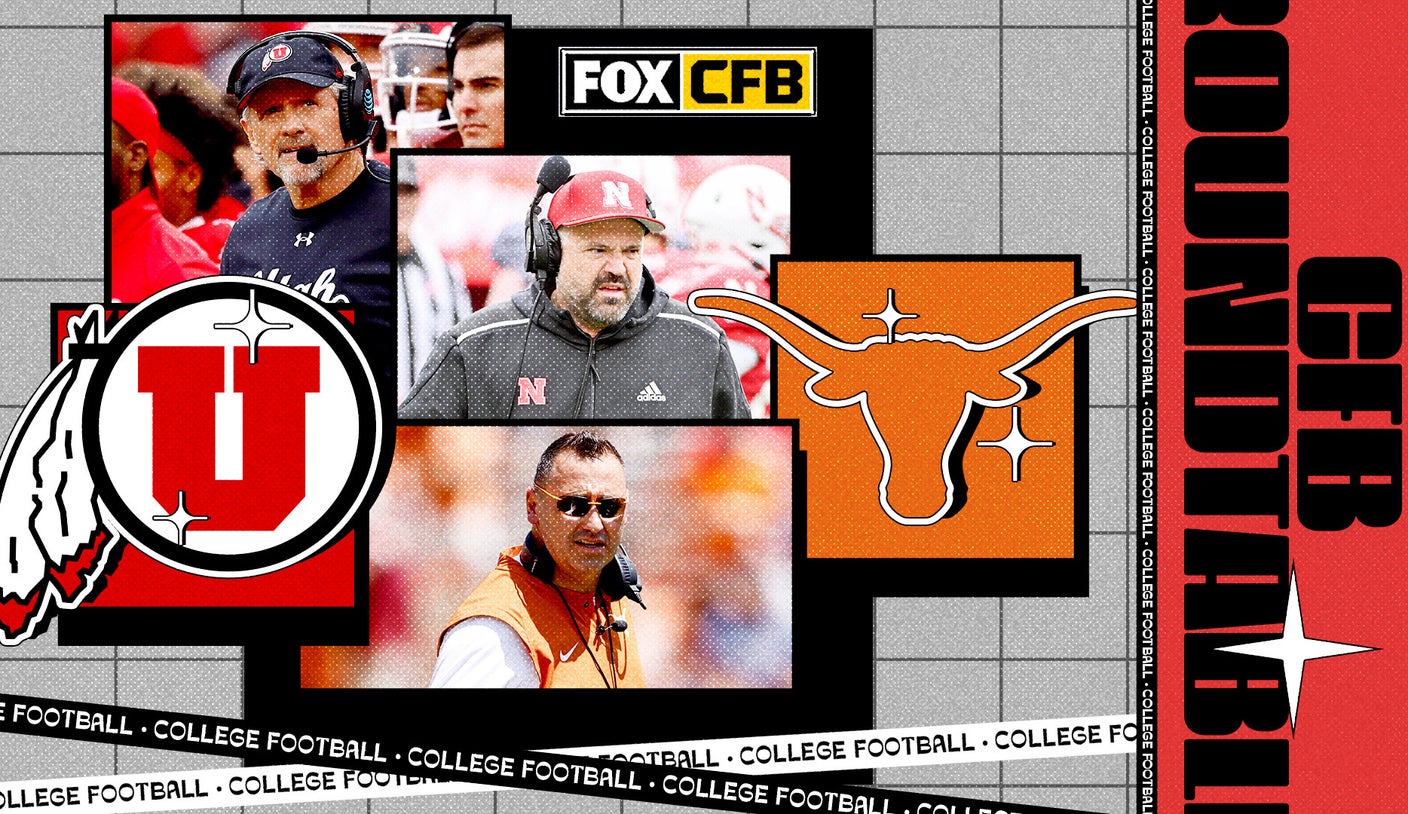
USC and UCLA have one more season out West before heading to the Big Ten. Oklahoma and Texas are preparing to make the leap from the Big 12 to the SEC.
The impact of these changes will be felt across the sport for years to come.
Which teams on the move will be able to take advantage of these changes? Which teams that are staying put are ready to do the same? And how will the key conferences in play adjust?
FOX Sports college football writers RJ Young, Michael Cohen, Laken Litman and Bryan Fischer are here to weigh in.
Oklahoma and Texas will leave the Big 12 following the 2023 season for admission into the SEC, a league that has produced 13 of the last 17 national champions. Which school can make the best short-term impression on its SEC brethren? Which program can have greater long-term success?
Laken Litman: There’s no reason the answer to both questions here shouldn’t be Texas. Steve Sarkisian enters his third year in Austin with a quarterback for the present (Quinn Ewers) and a quarterback for the future (Arch Manning). Both happen to be former No. 1 overall recruits in their respective classes.
If all goes according to plan this season, Texas could enter its first year in the SEC on a high. That would mean that Ewers has a killer season and maybe leads the Longhorns to a Big 12 title. A berth in the College Football Playoff wouldn’t hurt. Then he leaves early for the NFL draft, paving the way for a quarterback battle between Maalik Murphy and Manning next year. It’s hard to imagine that Manning would sit for two seasons — it’s equally hard to imagine that Murphy, for as good as he looked in the spring game last month, would be content to stay on the bench. Murphy reportedly had offers after the spring game, but wasn’t interested in going into the transfer portal.
If Texas can get a grip on its quarterback situation and Sarkisian can develop success stories on his roster like done at all of his previous coaching stops, then the Longhorns will have immediate success in the SEC.
Plus, Sarkisian had a top-three recruiting class (according to 247Sports) this season and has shown he can not only get some of the best players in the state and keep them from going to places like Alabama and Georgia but that he can also recruit in the states of Louisiana and Florida. If he can keep getting the top kids to commit to Texas, that will set the program up to be a college football power again.
As for Oklahoma, this will be a big season for Brent Venables after the disaster that was his first year. There’s no reason to believe the Sooners won’t also have long-term success. Venables and the Sooners just have more to prove right now.
RJ Young: Oklahoma can experience short-term and long-term success in the SEC. For the Sooners, 2023 is about proving that through the rest of the calendar year.
With a top-five finish in recruiting this season, Venables and his staff showed they can go get players both in high school and out of the transfer portal. What this season will show is whether Venables can take that overhauled roster — particularly on defense — and turn out the kind of product Sooners fans have grown accustomed to seeing on the field. To achieve that, Venables needs to reach a double-digit win total, lead OU to the Big 12 title game and a New Year’s 6 Bowl bid.
Such a season could propel the Sooners toward similar success in the SEC.
Bryan Fischer: It would not surprise me in the least if both schools received a rude awakening upon transitioning to the SEC, but short term it does seem like Sarkisian has Texas positioned nicely to have a decent campaign in 2024. Obviously, a lot of that comes down directly to having a quarterback (in either Ewers or Manning), some quality skill position players, and, most critically, a decent amount of upperclassmen starters along the offensive line. Their head coach having familiarity with the conference and some of the top-tier coaches in it doesn’t hurt either.
That said, history has told us all too many times that while Texas has all the factors to become a real blue blood regardless of league, it is with shocking regularity they have been unable to meet such lofty expectations. On the flip side, Oklahoma has far fewer natural advantages than their Red River rivals, but always seems to be able to figure things out and win and win and win. So whatever short-term success we could see out of UT could be similar to Missouri’s early years in the SEC, when they reached the conference title game, but eventually, things caught up with the Tigers as they fell back to the pack. For that reason, give me the Sooners finding far more consistent success down the road.
Michael Cohen: So many factors point toward the Longhorns in this scenario, beginning with recruiting. Few states in the country produce high school football players the way Texas does, and the recruiting rankings offer solid proof. The state of Texas has produced an average of 53.6 blue chip prospects per cycle in the five-class stretch from 2020-2024. That includes 26 five-star prospects and 21 four- or five-star quarterbacks, according to data from 247Sports. The local talent Texas can retain on a yearly basis is a coaching staff’s dream.
And there are other reasons. Sharing a border with Louisiana opens another fertile recruiting territory for Texas, which plucked the No. 1 player in the nation — quarterback Arch Manning — from New Orleans in the class of 2023. The Longhorns have signed seven players from Louisiana in the last five years, and four of them were rated as four- or five-star prospects. In addition, the cities of Austin, San Antonio and Houston — all of which are within a three-hour radius of each other — should afford the Longhorns’ players a menagerie of NIL opportunities that can benefit a larger percentage of the roster.
But this is Texas, the same school that won at least 10 games for nine consecutive seasons from 2001-09 under legendary coach Mack Brown but has accomplished that feat just once in the 13 years since. The last three coaches — Charlie Strong, Tom Herman and Steve Sarkisian, who is entering his third season — have combined to average 6.8 wins per year over their last nine campaigns despite all the aforementioned resources.
So why not resist temptation and choose Oklahoma, the program with a sustained run of success under former head coaches Bob Stoops and Lincoln Riley? The Sooners hired Venables away from Clemson after four College Football Playoff appearances and two national championships alongside coach Dabo Swinney. Venables knows what winning football looks like and put together the No. 5 recruiting class in the country during his first full cycle in Norman. When it’s all said and done, he might lead a smoother transition to the SEC than Sarkisian — or whoever is coaching Texas in 2024.
The Big Ten has yet to announce how the football schedule will be constructed once USC and UCLA join the league in 2024. There’s a belief, however, that the conference may consider eliminating its divisions in favor of a model that simply takes the first- and second-place finishers as entrants into the Big Ten Championship game. The Big Ten East, which includes Ohio State, Michigan and Penn State, has won nine consecutive title games to highlight the league’s imbalance. On the other side of the conference, which Big Ten West school (or schools) should be concerned about taking a step back if divisions are removed and their path toward the title game becomes increasingly difficult?
Michael: There might be some rude awakenings for fans of Northwestern and Iowa in the next few seasons, though the scope of their potential problems is far different.
For the Wildcats, head coach Pat Fitzgerald has done a remarkable job in putting together 10 seasons of .500 or better in 17 years at Northwestern. That he captured the Big Ten West crown twice in that span — first in 2018, again in 2020 — despite producing just three players selected in the first ∂three rounds of the last five NFL drafts speaks to how effectively, and how often, Fitzgerald and his staff have done more with less.
But the seasons between and after Northwestern’s trips to Lucas Oil Stadium have hinted at cracks in the foundation: a 1-8 conference record in 2019; a 1-8 conference record in 2021; a 1-8 conference record in 2022 despite being on the weaker side of the Big Ten’s geographic divide. As more and more of their conference rivals prioritize the Chicagoland area in recruiting — Wisconsin, Michigan and Illinois, to name a few — it’s difficult to envision Northwestern finding success in what might be a division-less Big Ten world.
The future at Iowa will be equally fascinating. For more than two decades, head coach Kirk Ferentz has overseen one of the most consistent programs in college football. He’s won at least seven games in a season 17 times and has finished below .500 just twice in the last 21 years. The Hawkeyes captured Big Ten titles in 2002 and 2004, and they’ve claimed the Big Ten West crown twice in 2015 and 2021.
Since the league separated its teams into East and West ahead of the 2014 campaign, Iowa has averaged 8.8 wins per season with three years featuring at least 10 victories. When the Hawkeyes finished 12-2 in 2015 — which remains the most successful season of Ferentz’s tenure — they did so without playing Michigan, Ohio State or Penn State. And while their scheduling advantage isn’t so pronounced every year, there’s no question Iowa has benefited from landing in the lackluster Big Ten West. Will the expectations in Iowa City change if and when those protections vanish?
RJ: Nebraska needs Matt Rhule to get a move on, and he has yet to coach a game as Huskers head coach — let alone in the Big Ten.
The program that was once one of the most feared in the sport through the last decades of the 20th century (and the first decade of the 21st) hasn’t played in a conference title game since 2012 — a 70-31 defeat to Wisconsin when the Big Ten debuted its Leaders and Legends divisions. That was also the last year Nebraska won 10 games
Huskers fans have also watched Purdue and Northwestern (twice) play for a conference title in two of the last three years as West Division winners.
For a program that hasn’t strung together a winning season since 2016, the imminent entry of USC and UCLA could mean more of the same in perpetuity if Rhule doesn’t get the Huskers bowl-eligible in 2023.
Laken: I agree with RJ here and am going with Nebraska. Rhule has quickly endeared himself to fans, and for a guy who has no ties to the program, he didn’t waste time embracing the culture.
But how does that translate on the field? The same comments could have and probably were said when Rhule took the head coaching job at Baylor after Art Briles was fired in 2016. After winning one game in 2017, Rhule had the Bears playing for a Big 12 championship and in the Sugar Bowl by 2019.
Nebraska has a winnable schedule this season that could be a good opportunity for Rhule to get his feet wet. Obviously, things will only get tougher when USC and UCLA join in 2024. If the conference was to stay East vs. West, you could probably bank on Rhule getting the Cornhuskers to the title game sooner rather than later — and that’s even with Luke Fickell at Wisconsin. But if the Big Ten removes divisions, the path to the top of the league becomes that much tougher.
Bryan: I don’t think there is any stopping the elimination of divisions, both between the upcoming College Football Playoff putting greater emphasis on the conference title games, and the fact that there’s been a bit of peer pressure with the ACC, Big 12 and Pac-12 all doing so, and the SEC soon to join. Truthfully, the entirety of the Big Ten West schools probably can’t be too thrilled at the change, but Iowa and Wisconsin even moreso than that. Those two programs have regularly been able to survive divisional play to get a decent shot at an East team for the right to go on to bigger things, but now that path seems much harder knowing they’re going to get many more games against the big three (Michigan, Ohio State and Penn State) plus additional contests against USC/UCLA taking the place of your usual trips to an Illinois, Purdue or Northwestern. Not exactly a fair trade, especially as the stakes get upped in a world where every game impacts that winning percentage to get to Indianapolis.
This is the last season in the Pac-12 for USC and UCLA, two programs that joined the league in 1922 and 1928, respectively, when it was still known by its original name, the Pacific Coast Conference. It’s unclear how or when the Pac-12 plans to replace the Trojans and Bruins, whose tandem transition to the Big Ten takes place in the summer of 2024. Of the remaining Pac-12 schools, is there a program (or two) capable of stepping forward to become a more consistent face of the conference?
Bryan: Given some of the travails that have taken place with both programs in Los Angeles, I think there’s a decent case to be made that at least in the past 5-10 years, both Oregon and Utah have wound up as the consistent faces of the league. The Ducks have played for the national title twice (under two different coaches) and had a shot at reaching the College Football Playoff again. The Utes haven’t quite gotten over the hump in terms of national respect, but Kyle Whittingham’s program is as good and consistent as any West of the Mississippi. Until he retires, that should remain the case.
The real question I have is if Washington under Kalen DeBoer can form a nice, consistent counterbalance to their bitter Pacific Northwest rivals, and if Arizona State can rise as a good foil for the Utes under young alum Kenny Dillingham. The Sun Devils have all the resources to be a regular contender for the Pac-12 crown once things get built up in Tempe, and the lack of the L.A. schools derailing their season should allow for a far greater number of wins than we’ve seen lately. The Huskies have already proven they can win plenty in the league, and DeBoer has a proven track record of producing great offenses and quality teams — something that should help turn Montlake into a regular stop for big games in the Pac-12 for years to come.
Michael: Let’s start with a trivia question. From 2018-2022, while Herm Edwards was the head coach at Arizona State, high schools in Arizona produced 28 blue–chip recruits. How many of those prospects wound up signing with the Sun Devils? The answer, shockingly, is zero. Not a single four- or five-star prospect from the state of Arizona committed to play for Edwards during his tumultuous tenure.
After swinging big and missing big on Edwards, who had prior experience as head coach of the Kansas City Chiefs and the New York Jets, athletic director Ray Anderson swung big again when he hired the 32-year-old Dillingham last November. Dillingham, who has since turned 33, had been the offensive coordinator and quarterbacks coach at Memphis (2018), Auburn (2019), Florida State (2020-21) and Oregon (2022). He graduated from Arizona State in 2012 but never played college football. This is his first head-coaching gig at any level.
In a macro sense, it’s difficult to find reasons why the ASU program has languished for the last 50 years. The Sun Devils have won 10 or more games in a season just six times since former coach Frank Kush did it five times in the 1970s alone. The weather in the Valley of the Sun is pristine. The scenery is unmatched. The Arizona State campus is gorgeous. Everything is there to entice high-level prospects to join, and as the recruiting data shows, there are plenty more blue-chippers within the state who might be convinced to stay at home.
It seems overly logical that Arizona State should be consistently good at football. And yet, year after year, coach after coach, it simply doesn’t happen. Perhaps Dillingham will be the one who translates logic into reality.
Laken: While USC and UCLA have the brand cachet, we can’t forget that Oregon and Utah are the schools that have won the last four Pac-12 championships. In fact, USC has only won two league titles in the last 15 years, while UCLA hasn’t won since 1998. Not to mention that Oregon and Washington are the only schools in the conference that have made the College Football Playoff.
When you think of the Pac-12, it’s easy to default to USC and UCLA as the top programs. But as those schools leave, the league is really up for grabs. It’s a safe bet to think Utah and Oregon could become the new faces given their respective recent success.
But of course, let’s leave room for Deion Sanders just in case he quickly turns things around at Colorado. With Coach Prime in the mix, the conference should be able to reestablish some prestige.
RJ: As I wrote in my post-spring practice top 25, Utah feels like Michigan — if Michigan played in the Mountain Daylight Time Zone.
Kyle Whittingham’s Utes must feel unappreciated. Utah has won back-to-back Pac-12 titles, made two-straight Rose Bowl appearances, and produced three 10-win seasons in four years. (The outlier is a 3-2 season in 2020.)
It’s not that Utah is best poised to carry the Pac-12 banner into the post-Los Angeles era, it’s that the Utes have already done that for the last two years.
Michael Cohen covers college football and basketball for FOX Sports with an emphasis on the Big Ten. Follow him on Twitter at @Michael_Cohen13.
RJ Young is a national college football writer and analyst for FOX Sports and the host of the podcast “The Number One College Football Show.” Follow him on Twitter at @RJ_Young and subscribe to “The Number One College Football Show” on YouTube.
Bryan Fischer is a college football writer for FOX Sports. He has been covering college athletics for nearly two decades at outlets such as NBC Sports, CBS Sports, Yahoo! Sports and NFL.com among others. Follow him on Twitter at @BryanDFischer.
Laken Litman covers college football, college basketball and soccer for FOX Sports. She previously wrote for Sports Illustrated, USA Today and The Indianapolis Star. She is the author of “Strong Like a Woman,” published in spring 2022 to mark the 50th anniversary of Title IX. Follow her on Twitter @LakenLitman.
COLLEGE FOOTBALL trending

Get more from College Football Follow your favorites to get information about games, news and more

Must See
-


Football
/ 6 days agoWhite Team Triumphs in Spirited Nebraska Spring Game
Lincoln, NE – In a closely contested Nebraska Spring Game, the White team edged...
-
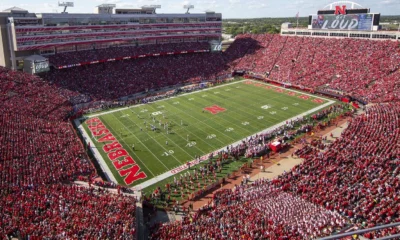

Featured
/ 1 week agoFan Guide to the Red-White Spring Game
Nebraska fans are set for a thrilling Saturday at Memorial Stadium for the annual...
-


Baseball
/ 2 weeks agoHuskers Command Series Victory with a Resounding Win
In a spectacular show of force, Nebraska equaled its highest run tally of the...


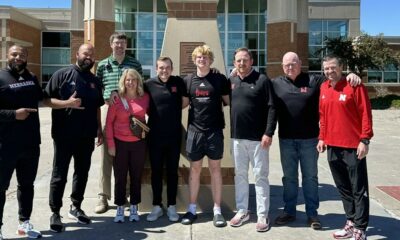







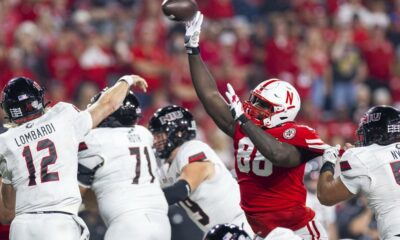

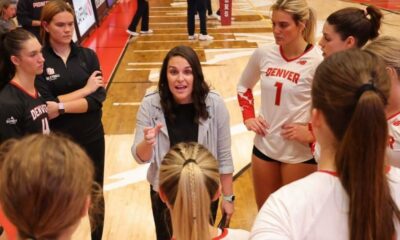

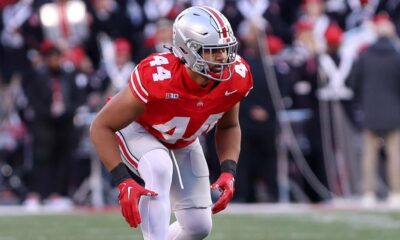







You must be logged in to post a comment Login